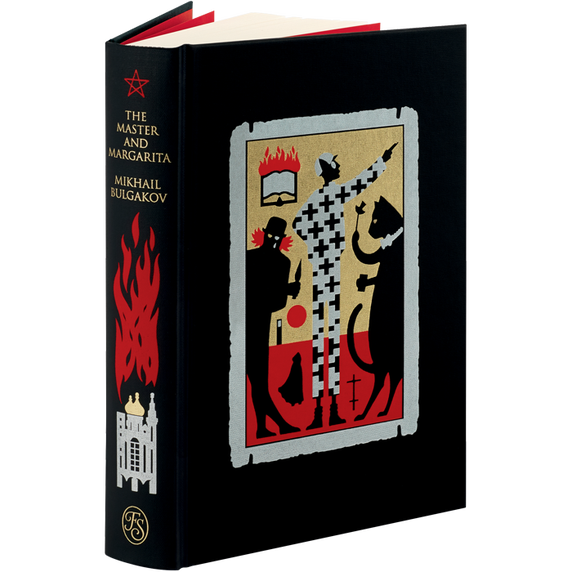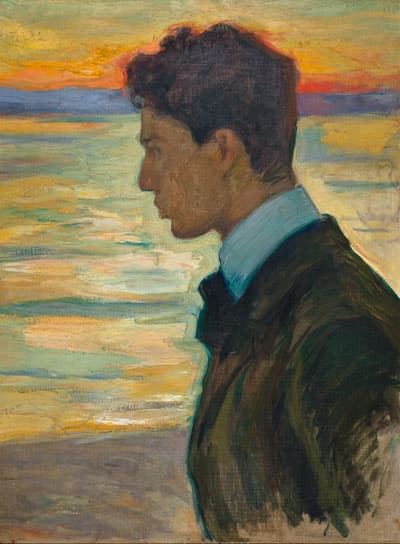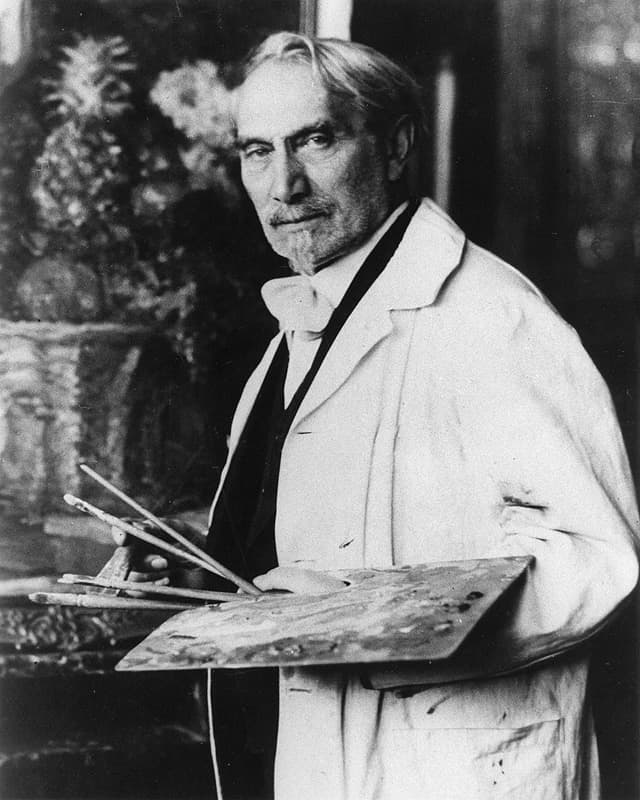
One of the great masterpieces of the 20th century, Mikhail Bulgakov’s The Master and Margarita is beautifully crafted as a unique Folio edition with illustrations by Peter Suart and an introduction by Orlando Figes.
Illustrated by Leonid Pasternak
Translated by Nicolas Pasternak Slater
Introduced by Ann Pasternak Slater
Commissioned by The Folio Society, Nicolas Pasternak Slater’s definitive new translation of the Nobel Prize-winning Doctor Zhivago is illustrated with original paintings by Boris Pasternak’s father, Leonid, with a new introduction by the author’s niece.
‘The first work of genius to come out of Russia since the Revolution’
- V. S. Pritchett
Originally published as a sell-out leatherbound Limited Edition, the Folio production of Doctor Zhivago brings together the creative brilliance of three generations of the Pasternak family for the first time. Commissioned exclusively for Folio, the author’s nephew Nicolas Pasternak Slater wrote what is coming to be regarded as the pre-eminent translation of Boris Pasternak’s novel. The author’s niece, literary critic Ann Pasternak Slater, has crafted an absorbing introduction that examines the remarkable poetic structure of the book, while the eloquent poems of the novel’s protagonist Yuri Zhivago are presented in English with translations by both Nicolas and the author’s sister Lydia Pasternak. This new cloth-bound edition is beautifully illustrated with 68 paintings and sketches by the author’s father Leonid, including an emotive portrait of Boris on the slipcase and a striking gold-blocked candle motif on the binding.
Two volume set
Bound in blocked cloth
Set in Albertina
Vol 1: 312 pages, Vol 2: 352 pages
68 integrated illustrations and sketches
Pictorial slipcase
10˝ x 6¾˝
A leading poet of his generation, Boris Pasternak wrote only one novel. Set against the tumultuous backdrop of the Russian Revolution, Doctor Zhivago is the epic story of Yuri Zhivago, a poet and musician who finds himself caught in the battle between the Bolshevik Red Army and the anti-communist Whites, and torn between the two women he loves. One of the greatest love stories ever told, it is also a depiction of Russia’s suffering and courage through revolutions, war and the purges of the Soviet regime. The novel was smuggled out of Russia and first published in Italian in 1957, and was immediately acclaimed as a masterpiece in the West. However, the freedom promised in the novel contrasts grimly with the fate of its writer: threatened with disgrace and exile, Boris Pasternak was finally denounced as an enemy of the people.
Rushed to press in 1958, the first English edition was criticised for its omissions and simplifications; while the second, published 50 years later, is literal but lacks elegance. In this definitive new translation, Nicolas Pasternak Slater – an eminent translator of Dostoevsky and Tolstoy – brings English-language readers as close as possible to his uncle’s authentic voice. The text reads effortlessly while retaining the richness and musicality of the original. Slater’s precise language and unique perspective as a close relative of the author is explored in detail in Ann Pasternak Slater’s introduction to the novel. The renowned literary critic – and niece of the author – argues that this new translation reveals the connection between man and nature through its poetic prose.
‘Thanks to Pasternak Slater’s choices, reading the novel becomes a pleasure’
- Christina Jacobson, Los Angeles Review of Books
Boris Pasternak acknowledged his father as the single most important influence on his creative development, and saw him as ‘a great, great artist’. Leonid left Russia in 1921 and saw Boris only once afterwards but they maintained an intense correspondence whenever war and censorship permitted. Leonid worked in oil, watercolour, pastel, chalk and pencil and these mediums are represented in the 67 paintings selected to illustrate this edition. Author and academic Maya Slater curated the series from the artist’s vast archives in Oxford and Moscow, and each was specially chosen for its echoes of the novel’s tone, atmosphere and characters.
One of Russia’s most revered writers, Boris Leonidovich Pasternak was born in Moscow, the elder son of the artist Leonid Pasternak and his wife Rosalia, a talented pianist. His childhood was spent immersed in the company of Russia’s finest artists, writers and musicians, including Leo Tolstoy, Sergei Rachmaninov and Alexander Scriabin, who inspired Pasternak’s early ambition to become a composer. But it was in poetry and prose that he found an outlet for his appreciation of melody and rhythm, and a voice for his own innate sensitivity.
Remarkable from the first collection for its lyricism and highly original, vividly impressionistic imagery, Pasternak’s poetry established him as a leading literary figure. Although he somehow survived the relentless purges, from the 1930s Pasternak’s work was often disparaged in the Soviet press and banned by the authorities. However, with the publication in 1957 of his only novel, Doctor Zhivago, written over many years under the burden of Soviet Russia’s stringent censorship, he found worldwide acclaim.
In 1958 Pasternak was awarded the Nobel Prize in Literature, but the threat of exile from the Soviet Union led him to decline the honour. He died in Peredelkino, a village outside Moscow.

The name of Leonid Pasternak, once a prominent Russian Post-Impressionist artist, became politically unmentionable in the Soviet Union. Boris acknowledged his father as the single most important influence on his creative development and ‘a great, great artist. Far greater than I am’. After leaving Russia in 1921 Leonid saw Boris only once, although their correspondence was intense whenever war and censorship permitted.
To illustrate this edition, more than 60 of Leonid’s beautiful original artworks – in oil, watercolour, pastel, chalk, charcoal and pencil – have been selected by author and academic Maya Slater, from the artist’s vast archives in Oxford and Moscow. Fortuitously, almost the whole of Doctor Zhivago is set during the early part of Leonid’s career, when he was working in Russia and at his most prolific, and the images – comprising urban and rural landscapes, compelling portraits and some scenes of historical record – have been specially chosen for their echoes of the novel’s tone, atmosphere and characters.

Nicolas Pasternak Slater is the son of Boris Pasternak’s sister Lydia and her husband Dr Eliot Slater. Born in Oxford, he trained as a Russian interpreter in the Royal Navy, and then studied Russian and German at Queen’s College, Oxford. He undertook research in linguistics and automated translation at the University of Milan (Italy). He then qualified in medicine and completed his medical career as a Consultant Haematologist at St Thomas’s Hospital, London. After retirement he took up translating from Russian, publishing Boris Pasternak: Family Correspondence, 1921–1960 with Hoover Institution Press (Stanford, USA), followed by Lermontov’s A Hero of Our Time, Pushkin’s A Journey to Arzrum, Tolstoy’s The Death of Ivan Ilyich and Other Stories, and Dostoevsky’s Crime and Punishment, all for Oxford University Press; and Chekhov’s The Beauties: Essential Stories for Pushkin Press, London. He lives in London with his wife Maya Slater. Their two daughters Lydia and Sasha work in journalism. They have four grandchildren.
Ann Pasternak Slater is the younger sister of Nicolas. Their mother, Boris’s youngest sister Lydia, took Ann with her on her first return to Moscow, immediately after Boris’s death in 1960, and Ann often visited the Pasternak family after that. She translated the memoirs of Alexander Pasternak: A Vanished Present (OUP, 1984); Alexander was Boris’s younger brother, an architect (among other things the designer of Lenin’s first, wooden mausoleum). Ann has written a biographical account of Boris’s lifelong engagement with Shakespeare: ‘Indirect Dissidence: Shakespeare and Pasternak’, in Great Shakespeareans, vol. xiv, ed. Ruth Morse (Bloomsbury, 2013). She has also published books on Shakespeare and Evelyn Waugh, and is a Senior Research Fellow at St Anne’s College, Oxford.
Maya Slater is a Senior Research Fellow of Queen Mary University of London. Among the books Maya Slater has edited are Boris Pasternak: Family Correspondence, 1921–1960, translated by her husband Nicolas Pasternak Slater, and her own verse translations of Molière’s plays. She is the author of Humour in the Works of Proust, The Craft of La Fontaine and other works on French literature, and of a novel, Mr Darcy’s Diary.
